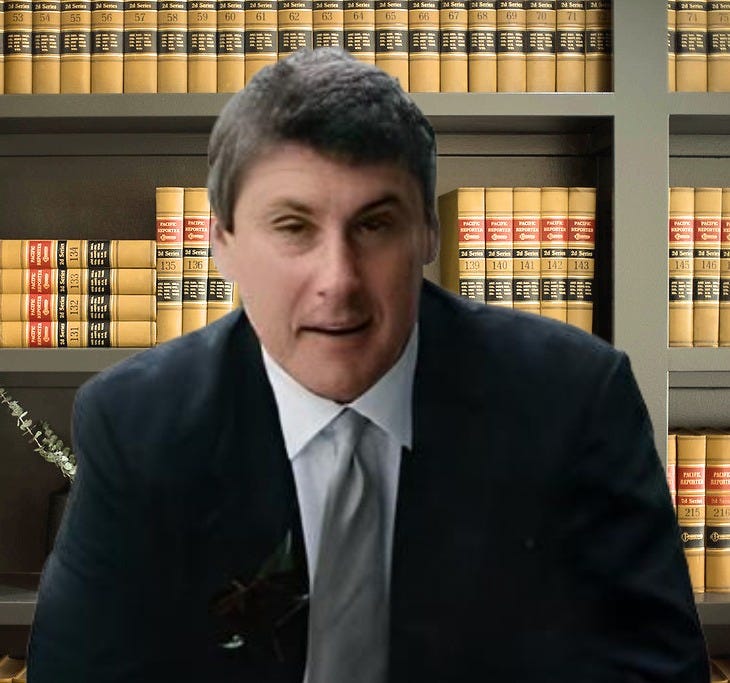By Richard Luthmann and Rick LaRivière
John “Johnny T” Tortora, a beloved community member and manager at Yonkers Pawnbrokers, became entangled in a federal investigation driven by corruption, incompetence, and staggering waste of taxpayer dollars.
The 1997 cold case murder of Richard Ortiz, a minor criminal and informant, became a pretext for federal prosecutors to pursue Tortora without evidence, relying on fabricated testimony, dubious claims, and a campaign of intimidation.
This case exposes systemic failures from the Yonkers Police Department (YPD) to the FBI and federal courts.
The 1997 Murder of Richard Ortiz
On November 11, 1997, Richard Ortiz was found fatally stabbed under a bridge near the Mill Tavern on Lockwood Avenue in Yonkers.
A known informant and petty criminal, Ortiz had a Rap Sheet. He had made enemies throughout the city, and early investigations revealed suspects tied to local disputes.
Despite the extensive investigation by the YPD, the case went unsolved. No evidence linked Tortora to the crime. Witnesses at the time failed to identify Tortora in any capacity.
The narrative changed years later when Carmine Francomano, Jr., a known Government RAT and self-serving informant, implicated Tortora in the murder. His sudden memory of Tortora’s involvement coincided with federal pressure to close the case and make headlines.
Enter Detective Geiss from the Yonkers PD Cold Case Squad.
Dirty Detective Geiss and the Yonkers Police
John T. Geiss, a Yonkers detective known for questionable ethics, spearheaded the renewed investigation.
A local source described him as “a lazy, fat, drunken Irish fraud and a dirty cop.” The source said he knows Geiss has moved from Yonkers and believes he now “lives down by his Quantico boyfriends in Virginia.”
The source recounted how it was common knowledge that Geiss would get drunk during the day while on duty at “titty bars” and “fall asleep on his stool.”

Geiss’s involvement raised red flags due to his track record of coercing witnesses and fabricating evidence. His handling of the Ortiz cold case was no different. It relied heavily on Francomano’s dubious testimony.

No police reports from 1997 to 2015 mentioned Tortora, yet Geiss reconstructed the narrative to align with federal interests. Locals argue that Geiss was motivated more by personal grudges and career advancement than justice.
“He was determined to pin this on Johnny, no matter the facts,” another Yonkers resident familiar with the case said. “He’s a fat, jealous prick.”
The Rats: Lies, Betrayal, and Shifting Stories
Two key cooperating witnesses in the case against John "Johnny T" Tortora—Carmine Francomano Jr. and Abdill Saez—played pivotal roles in spinning a narrative riddled with contradictions and personal agendas. Geiss was their conductor while they sang.
Both individuals pleaded guilty in connection with the 1997 murder of Richard Ortiz. However, our investigation to this point has uncovered no court documents reflecting the guilty pleas. Their credibility and motives remain as deeply questionable as the Government veil surrounding their cooperation.
Francomano, a reputed “La Cosa Nostra” (LCN) associate and RAT turncoat, was present at The Mill Tavern with Saez the night Ortiz was killed. After Ortiz was stabbed multiple times in the stomach following an argument, Francomano drove Saez from the scene.
Initially, Francomano ratted on Saez as the murderer, leading to Saez’s arrest.
However, the then-Westchester District Attorney - Judge Jeanine Piro -found the case too weak to pursue, likely because Francomano himself was a suspect.
Francomano’s motivations and actions have long been suspect. Tortora’s defense argued that Ortiz was ordered killed for reporting an after-hours speakeasy operated by Francomano’s family to authorities. A Yonkers witness recently corroborated these facts.
“Ortiz got pulled over on a drunk driving arrest. He started singing about Francomano’s after-hours club. A few weeks later, Francomano got raided and shut down. He blamed Ortiz and was right to do so,” the source said.
Witnesses cited in Tortora’s defense described Francomano as someone who bragged about ordering Ortiz’s murder over the years without ever implicating Tortora.
When arrested in 2015, Francomano changed his story. For the first time, he claimed that Tortora ordered the hit.

This sudden shift conveniently aligned with federal prosecutors’ long-standing desire to implicate Tortora.
“All the Feds had a hard-on for Johnny T, because everyone on the street loved him,” said the source. “Even the biggest pricks like [James] Comey tried to take him down for penny ante bullshit.”
Tortora’s defense attorney, Barry Levin, pointed out that Tortora’s name never appeared in the case file prior to Francomano's arrest.
Abdill Saez: The Suspected Stabber
Saez, identified by Francomano as Ortiz’s killer, also played a murky role in the case. Saez pleaded guilty to an unrelated assault charge and served time for parole violations before moving to Colorado and later California.
Witnesses reported seeing Saez covered in blood and agitated shortly after Ortiz’s murder, further implicating him in the crime. One witness described Saez as reeking of alcohol and visibly shaken after the attack.
While Saez’s actions on the night of the murder cast doubt on his innocence, prosecutors never secured an indictment against him for Ortiz’s killing. The lack of reliable evidence and the tarnished credibility of Francomano as a key witness muddied the case against Saez.
A Manufactured Federal Spectacle
Carmine Francomano’s accusations against John "Johnny T" Tortora emerged only after Francomano’s 2015 arrest—nearly two decades after Richard Ortiz’s murder. Until then, Tortora’s name had never surfaced in connection with the case, nor was there any evidence implicating him.
Francomano’s sudden shift allowed federal prosecutors to construct a far-fetched narrative that Tortora had ordered the hit, claiming Ortiz had stolen from “mob-controlled Joker Poker” machines and provided information about La Cosa Nostra to law enforcement.
This story, while convenient for the federal narrative, lacked any corroboration. It relied entirely on Francomano’s credibility, which was undermined by his history of self-serving lies and his documented role in the events leading to Ortiz’s murder.
Defense attorney Barry Levin dismantled the government’s theory, emphasizing that the murder was rooted in Francomano’s personal vendettas and illegal activities, not any connection to Tortora.
“None of this had anything to do with Tortora,” Levin argued.
Despite these contradictions, federal prosecutors pressed forward, seeking a high-profile conviction. The federal government transformed its pursuit of Tortora into a costly spectacle.
In 2018, the FBI conducted a dramatic raid on Tortora’s business, One Saw Mill River Road, deploying helicopters and heavily armed agents.
This operation, which cost millions of taxpayer dollars, uncovered no evidence linking Tortora to the Ortiz murder. It was all in the effort to make the Tortora case appear like it was “Goodfellas,” and Johnny T was the Ray Liotta character.
The raid was justified under the pretext of illegal gambling operations tied to “Joker Poker” machines. However, these devices were legal entertainment machines, and no substantive evidence connected them to the Ortiz case. Critics argue the gambling claims were fabricated to federalize the case, securing jurisdiction and justifying an inflated budget.
And there was technology in 2018 that could have given the FBI a bird’s eye view of Yonkers Pawnbrokers without the cost of a helicopter: GOOGLE MAPS.
Ultimately, the spectacle served as a smokescreen for a prosecution built on unreliable witnesses and conflicting narratives, prioritizing federal optics over justice.
Obstruction and a Manufactured Case
When prosecutors failed to connect Tortora to Ortiz’s murder, they shifted focus to obstruction charges. Federal agents accused Tortora of destroying surveillance footage under subpoena.
However, evidence showed that the footage was lost due to technical failures, not deliberate action. Despite these facts, the government painted a picture of obstruction to secure a conviction.
Defense attorney Barry Levin called the obstruction charge “a shameless attempt to salvage a failed investigation.”
Prosecutors used the obstruction narrative to punish Tortora for a murder they could not prove he committed.
A Judge Who Turned a Blind Eye
Judge Sidney H. Stein presided over Tortora’s trial and sentencing. Federal prosecutors employed a controversial tactic, using Ortiz’s murder as “relevant conduct” to enhance Tortora’s sentence.
This maneuver allowed the government to threaten to impose penalties for a crime Tortora was never convicted of and had no evidence of—other than what Geiss and the FBI manufactured.
Tortora requested a Factico hearing and called the Government’s bluff. The SDNY US Attorney’s Officer folded like a tent and had nothing to offer, begging the question of whether their prior court filings and representations were intentionally dishonest.
Nonetheless, Judge Stein still sentenced Tortora to four years in prison for obstruction and related charges.
Attorney Levin criticized the sentence as excessive and reflective of a system more concerned with appearances than justice.
Tortora spent nearly two years in pretrial detention at the Metropolitan Detention Center in Brooklyn, enduring inhumane conditions, including a six-day blackout in 2019.
The Fallout: Waste and Accountability
The government’s actions devastated Tortora’s life and business. The raids crippled his pawnshop, and the associated legal battle drained his finances. His family suffered deeply, with his daughter, who depends on him for care, facing the brunt of his absence.
Despite his conviction, Yonkers residents rallied behind Tortora, viewing him as a victim of systemic corruption.
“Johnny T is a good man,” said a local supporter. “He didn’t deserve this. The real criminals are the dirty cops and lying feds who put him through hell.”
The Tortora case exemplifies the dangers of unchecked federal spending and prosecutorial overreach. The FBI burned through millions of taxpayer dollars on helicopters, raids, and a prolonged investigation that ultimately hinged on fabricated evidence.
Critics argue that the conviction was necessary to justify the federal government’s wasteful spending.
Calls for accountability have grown louder, with figures in the incoming Trump administration urged to investigate the FBI’s handling of the case.
“This wasn’t about justice—it was about saving face,” said a Yonkers resident. “They needed a win to justify their budgets, and Johnny T paid the price. Scumbags.”
What’s Next?: Witness Questions and FOIL Requests
The story of Johnny T exposes systemic failures at every level of law enforcement and the judiciary. It is a stark reminder of the dangers posed by unchecked power, wasteful spending, and the prioritization of ego over justice.
As Pam Bondi and Kash Patel step into pivotal roles shaping justice reform, the Tortora case demands their attention as a glaring example of FBI waste and prosecutorial overreach. Helicopter raids, fabricated narratives, and reliance on unreliable informants cost taxpayers millions while delivering no substantive justice.
Reforming the DOJ means holding federal agencies accountable for their excesses and ensuring that cases like Tortora’s—built on theatrics and self-serving lies—never happen again. Bondi and Patel should prioritize rooting out corruption, enforcing fiscal discipline, and restoring public trust in federal law enforcement by making accountability and efficiency non-negotiable cornerstones of reform.
How many more lives will be destroyed before the system is held accountable?
The answer: none, if we can help it.
We submitted detailed questions to Geiss, Francomano, and Saez. As of press time, we have not received a response. If we do not receive a response, we will publish the full questions in an upcoming article.
We have also already submitted FOIL requests to the FBI, DOJ, SDNY, Westchester County Prosecutor, Yonkers Police Department, and NYPD.
We are prepared to investigate this case thoroughly and make our findings public. Stay tuned for the results.









































Share this post